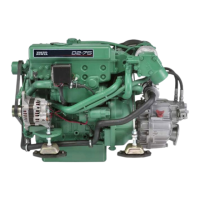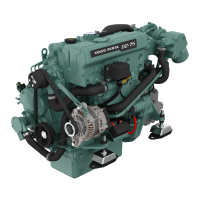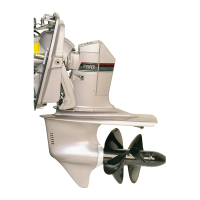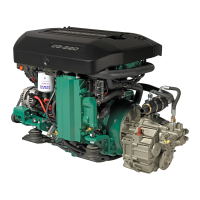
 Loading...
Loading...
Do you have a question about the Volvo Penta D2 Series and is the answer not in the manual?
| Brand | Volvo Penta |
|---|---|
| Model | D2 Series |
| Category | Outboard Motor |
| Language | English |
Routine checks for engine and compartment safety before and after operation.
Essential protective gear for safe operation and maintenance of the engine.
Warnings about the hazards of approaching moving engine parts and hot surfaces.
Guidelines for safely handling batteries, warning of fire, explosion, and corrosive electrolyte risks.
Importance of regular servicing and using genuine Volvo Penta parts for reliability and safety.
Presentation of windows with operational information via the EVC system display.
Essential checks before starting the engine, including oil, coolant, fuel, and electrical systems.
Steps to start the engine using the control panel buttons and pre-heating function.
Idling the engine, checking instruments, and warming up at low load before full power.
How alarms are indicated, how to cancel them, and necessary actions to take.
Proper procedures for shifting between ahead and astern at idle to ensure smooth operation.
Steps to properly stop the engine using the stop button and cutting power.
Checks and actions to perform after the engine has been shut down, including leak checks and hour meter readings.
Measures to prevent freeze damage to the engine and cooling system in cold conditions.
Identifying system faults indicated by specific symbols and checking wiring for issues.
Interpreting various warning lamps on optional instruments for engine status.
Actions to take when the coolant temperature lamp indicates overheating, including checking levels and filters.
Steps for addressing low oil pressure, including checking oil levels and filters.
Step-by-step guide for starting the engine using auxiliary batteries with safety warnings.
How to check and maintain the engine oil level, with warnings about overfilling.
Safe procedure for checking and topping up engine coolant, with warnings about hot coolant.
Procedures for inspecting and replacing the raw water pump impeller, with warnings about lubricant use.
How to check and maintain the transmission lubricant level in the drive/reverse gear.
Recommendations for boat storage, including engine and drive train conservation for winter.
Steps for preparing the boat and engine after storage, including checks and fluid replacements.
Specifications for different engine models, including power, dimensions, and weight.
Details on oil capacity, viscosity, and oil change intervals for various engine models.
General and special requirements for diesel fuel quality to ensure engine compliance and performance.











